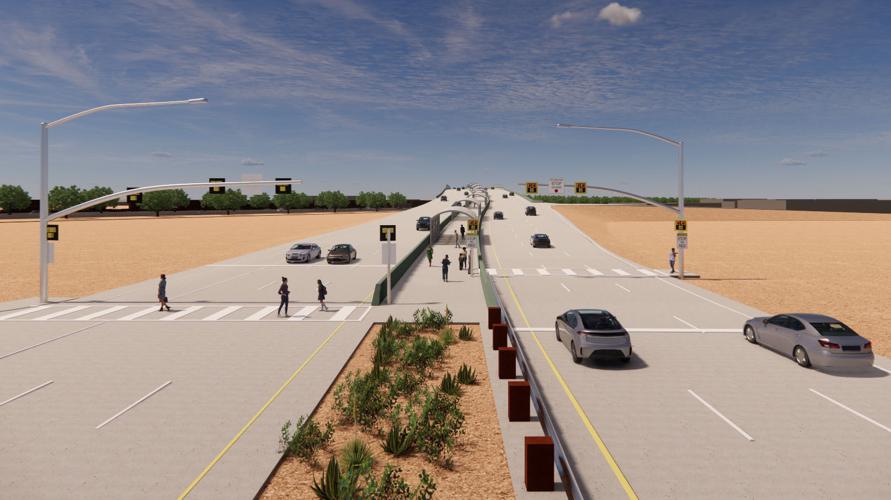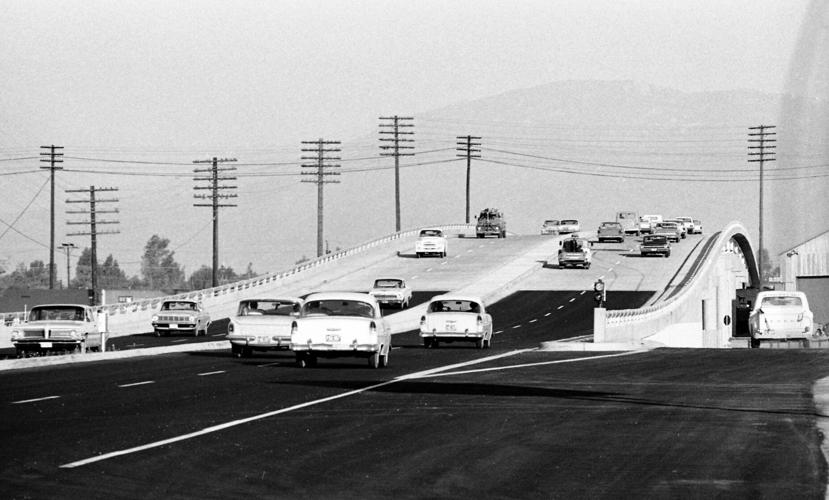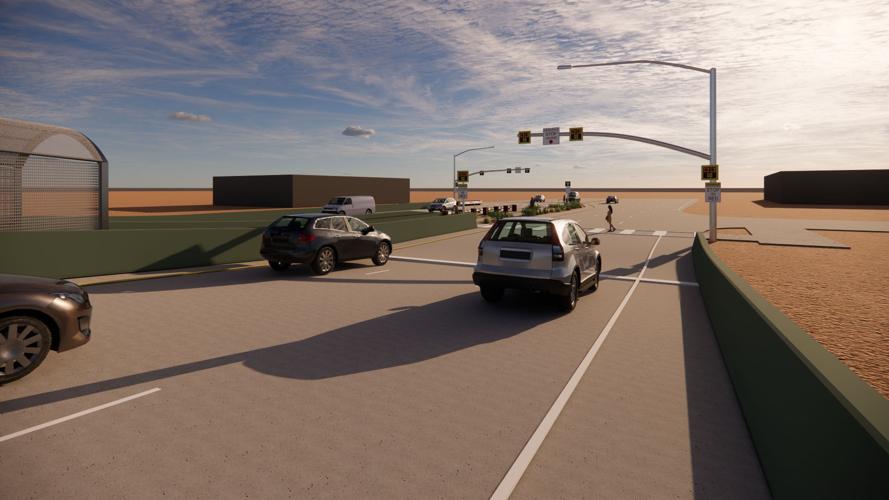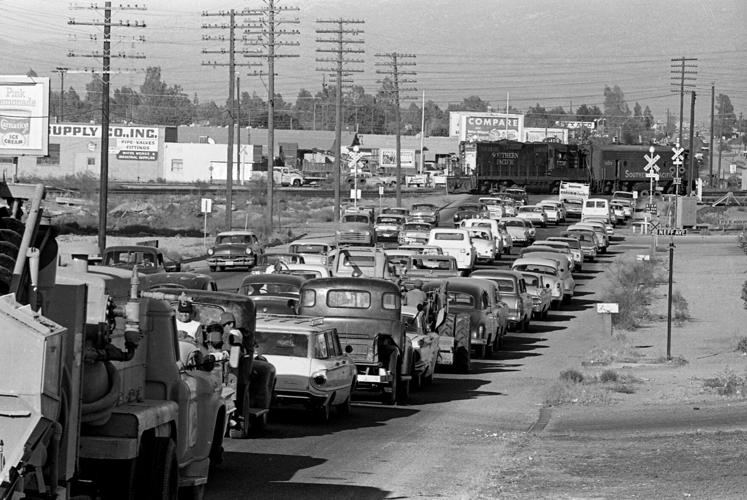When Tucson applied for a federal grant to build a new 22nd Street bridge, the plan for pedestrians seemed pretty clear.
In the application, city officials wrote, “The project would include the construction of a dedicated pedestrian and bike bridge in addition to multiuse paths and pedestrian and bike accommodations on the 22nd Street bridge.”
The mayor mentioned it, too, when the city won the $25 million federal grant in August and welcomed Transportation Secretary Pete Buttigieg to town.
“The new bridge will be expanded from four to six lanes, and will feature a divided median, and a separate bicycle and pedestrian bridge,” Mayor Regina Romero said in a written announcement.
A 2014 city document explained it this way: “Entry and egress to this separate bridge structure will be provided from ground level at either end of the bridge adjacent to the bridge abutments. The pedestrian/bicycle bridge will connect to existing bicycle and pedestrian facilities, including the multi-use pedestrian/bicycle facility paralleling the Maclovio Barraza Parkway and the newly constructed path on the north side of 22nd Street.”
But the design of the $100 million project looks different now, in ways that are raising protests.
While the original plan was for a separate pedestrian and bicyclist bridge, the current renderings for the bridge show a protected lane for pedestrians and cyclists going down the middle of the bridge with episodic shade structure.
From north to south, in this proposed configuration, the bridge would have three lanes of traffic going west, a protected lane in the middle, then three lanes of traffic going east.
Where people emerge on foot or bike at either base of the bridge, there would be HAWK lights on both sides of this central strip. So, pedestrians or cyclists using the protected lane would have to stop traffic and cross three lanes either to the north or the south to leave the center of traffic.
In earlier designs, the pedestrian and cyclist crossing was still between the two sides of traffic, but it was on a separate bridge that did a 180-degree turn near the end and let walkers and cyclists off under the bridge. There, sidewalks and bike lanes connected them beyond 22nd Street without crossing traffic.
Earlier designs also included entry and exit from the Barraza-Aviation Parkway, but they are closed off in recent versions.
This is not a final design, but it’s upsetting some residents of nearby neighborhoods, who have spoken out at recent city gatherings and emailed their council members pointing out some pretty clear problems with the new plan.
“This 22nd Street project was framed as a connectivity and social equity project and investment in infrastructure to create safer ways for drivers, pedestrians, and bicyclists,” Arroyo Chico resident Jose Munoz wrote in an email.
“But now, with this ‘new’ plan, residents are expected to cross 22nd Street to get on the bridge to walk and bike between three heavy traffic lanes on each side and then cross 22nd again. So how is this ‘new’ plan solving all the current issues for bicyclists/pedestrians?”
Andrew Christopher, president of the Arroyo Chico Neighborhood Association, wrote, “Placing the bike and pedestrian path in the middle of six lanes of traffic is going to create a very loud and hot environment filled with exhaust fumes and a very real sense of danger.”
“Perhaps it stands to reason that the design choice to combine the pedestrian/bike bridges in the middle rather than on the sides is a cost saving measure being presented as a unique feature, and not one made with the interests of the end users in mind.”
Cynthia Ayala, president of the Pueblo Gardens Neighborhood Association, told me Tuesday, when she looked at the HAWK lights at the bottom of the bridge slope: “I think that’s a terrible accident waiting to happen.”
I’m a fan of Tucson’s HAWK lights myself, having used them successfully many times over the years to cross the city’s busy streets. But this way of using the lights doesn’t make a lot of sense to me. I wouldn’t want to cross where three lanes of cars are zooming downward off the bridge, even if a HAWK light is flashing.
Erica Frazelle, a spokeswoman for the city’s Department of Transportation and Mobility, explained in an email that bike and pedestrian facilities couldn’t be included on each span of the bridge because of clearance requirements over the railroad tracks.
“These constraints as well as the additional costs associated with this design is why the City and its design team moved forward with the design back in 2009 allowing both segmental bridges to share the loads created by the single bicycle and pedestrian facility and ultimately meet the clearance requirements,” she said in an email.
Mayor Romero, in a texted statement, said, “My responsibility is to lay the vision for our community and get the money. And I’ve done both.”
True as far as it goes. But, as I’ve said about Broadway and other big projects, we’ve got to start getting this right from the start. Having pedestrians cross 22nd Street at the bottom of a new bridge seems like a design flaw we can fix.
Get your morning recap of today's local news and read the full stories here: tucne.ws/morning







